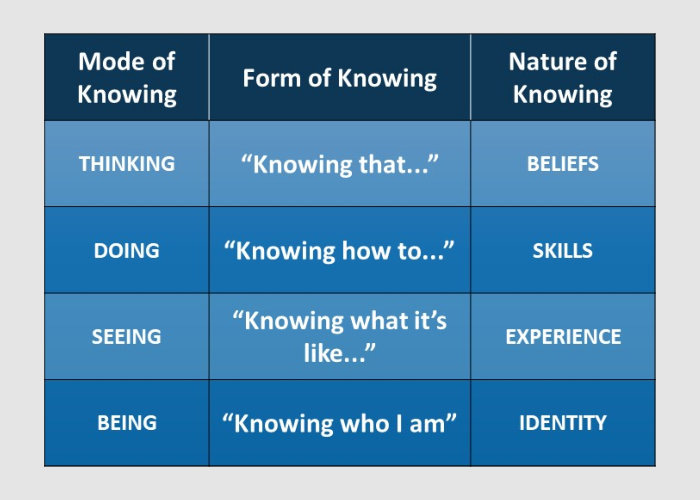Cultural fit or cultural fitness?
When people are forced to fit, the organisation won’t flourish
“Are you stuck with your habits, your knowledge, your weight, your fitness, your interpersonal skills? Is your future a slightly different rerun of your past?.” — Seth Godin1
In most organisations the dominant tendency is for people to become trapped in 2D mindsets, particularly as they progress up the hierarchy.
Whilst this tendency persists, organisations will consistently fail to create future-fit cultures of innovation, agility, and adaptiveness.
That’s because future-fit cultures require the widespread emergence, adoption, and normalisation of 2D3D mindsets throughout the organisation.
I’ve previously written about mindsets in general, what they are and how they operate, drawing on recent developments in cognitive science. 2
And because of their vital importance to the creation of future-fit cultures, I’ve also published extensively on the crucial difference between 2D and 2D3D mindsets.3
Mindsets
To briefly summarise, a mindset can be thought of as a four-layer cognitive stack where each layer represents a different type of knowing: Thinking, Doing, Seeing, and Being. 4
Each of us is always operating from a mindset containing all four layers and giving rise to our disposition, attitude, behaviour, actions, and interactions. 5
2D and 2D3D mindsets
A 2D3D mindset recognises that none of us ever sees the whole of reality.
If I adopt and operate from a 2D3D mindset, I remain aware that all any of us ever possesses is an inevitably incomplete “2D” perspective on a “3D” reality that none of us ever perceives in its entirety.6
By contrast, a 2D mindset creates the illusion that my individual narrow, biased, and one-sided 2D perspective is reality.
Then, due to this illusion, others who see things differently to me will automatically appear to be incompetent and/or unreasonable, or have attitude and/or aptitude problems, or be self-evidently mad, or bad, or both.
At the Thinking level of cognition, a 2D mindset only accepts the thinking of like-minded colleagues (“us”), rejecting different thinking from those it sees as “them”.
This mindset leads to the us and them attitudes and behaviours that cause organisations to fragment into fiefdoms, factions, and silos — stifling, smothering, and strangling the innovation, agility, and adaptiveness needed for a future-fit culture.
A 2D3D mindset, however, encourages and embraces diverse perspectives, recognising that none of us will ever be as smart, successful, and entrepreneurial as all of us.
At the Doing level of cognition, a 2D mindset prioritises decision making.
If the right decision to make is unclear, a 2D mindset is highly susceptible to the so-called “best practice solutions” of outsiders.
Outsiders with their own agendas…
By contrast, a 2D3D mindset prioritises the creation of conditions in which good decisions get made and implemented on an iterative, ongoing basis so new value is continuously generated within and throughout the organisation.
It achieves this through repeated sense making, decision making, and action taking that reflects the organisation’s unique context, and leverages its unique potential for continuous new value creation.
At the Seeing level of cognition, a 2D mindset experiences different perspectives as either “right” or “wrong”, mistakenly assuming that what I see is all there is.
A 2D3D mindset, however, rises above this false dichotomy of right and wrong perspectives, remaining fully aware that none of us ever sees the whole picture.
At the Being level of cognition, someone operating from a 2D mindset has a deep seated need for certainty, which they seek to find in “proven” solutions that perpetuate the legacy orthodoxies to which their identity is anchored.
By contrast, a person operating from a 2D3D mindset acknowledges and accepts that the world is unavoidably uncertain — increasingly so — and therefore remains open and receptive to new possibilities, even ones that may seem heretical to those whose sense of self remains trapped in the past.
With the understanding that organisational culture is the system of mindsets forming and informing people’s awareness of the way we do things round here, it becomes clear why a culture based on 2D mindsets sends the message: “fit in — or find somewhere else”. 7
This focus on cultural fit, based on compliance with a set of supposedly “shared values”, destroys innovation, agility, and adaptiveness. 8
By contrast, a culture built on 2D3D mindsets encourages people to develop the innovative, agile, adaptive entrepreneurial muscles that create the cultural fitness required to thrive in an increasingly uncertain and unpredictable world.
Questions for reflection
Does the culture of your organisation lead people to develop 2D mindsets or 2D3D mindsets?
Do you personally tend to operate from a 2D or 2D3D mindset? (The acid test is how often do you perceive others as incompetent and/or unreasonable, as having an attitude and/or aptitude problem, or as mad, bad, or both).
Does your organisation demand cultural fit, locking people into outdated legacy ways of thinking, doing, seeing, and being — or is it actively developing its cultural fitness, building the innovation, agility, and adaptiveness muscles it needs to thrive in an increasingly uncertain and unpredictable world?
Seth’s Blog — Plasticity.
Ibid (Demystifying Mindsets).
Our mindset changes dynamically, often dramatically, based on the different identities we adopt and assign in our day-to-day lives. For example, the Chairman of a Fortune 500 corporation typically adopts and operates from markedly different mindsets in a) board meetings with investors and b) at home with his 6 year old granddaughter on his knee…
3D reality is sometimes referred to as the “God’s eye perspective”.
For more on culture as system of mindsets, see this previous article Culture - values or mindsets?
See also this previous article The toxic myth of 'culture as shared values'.






